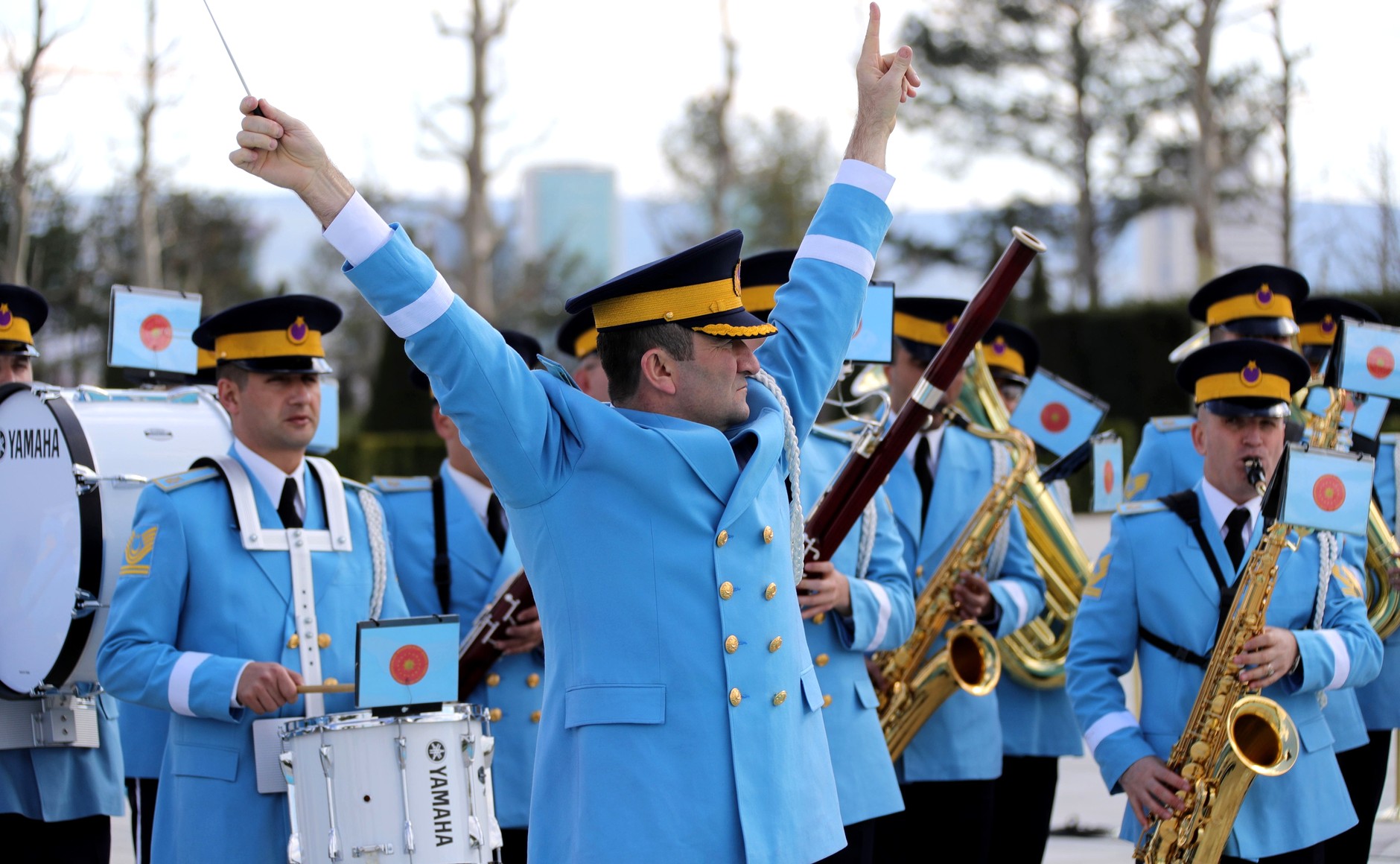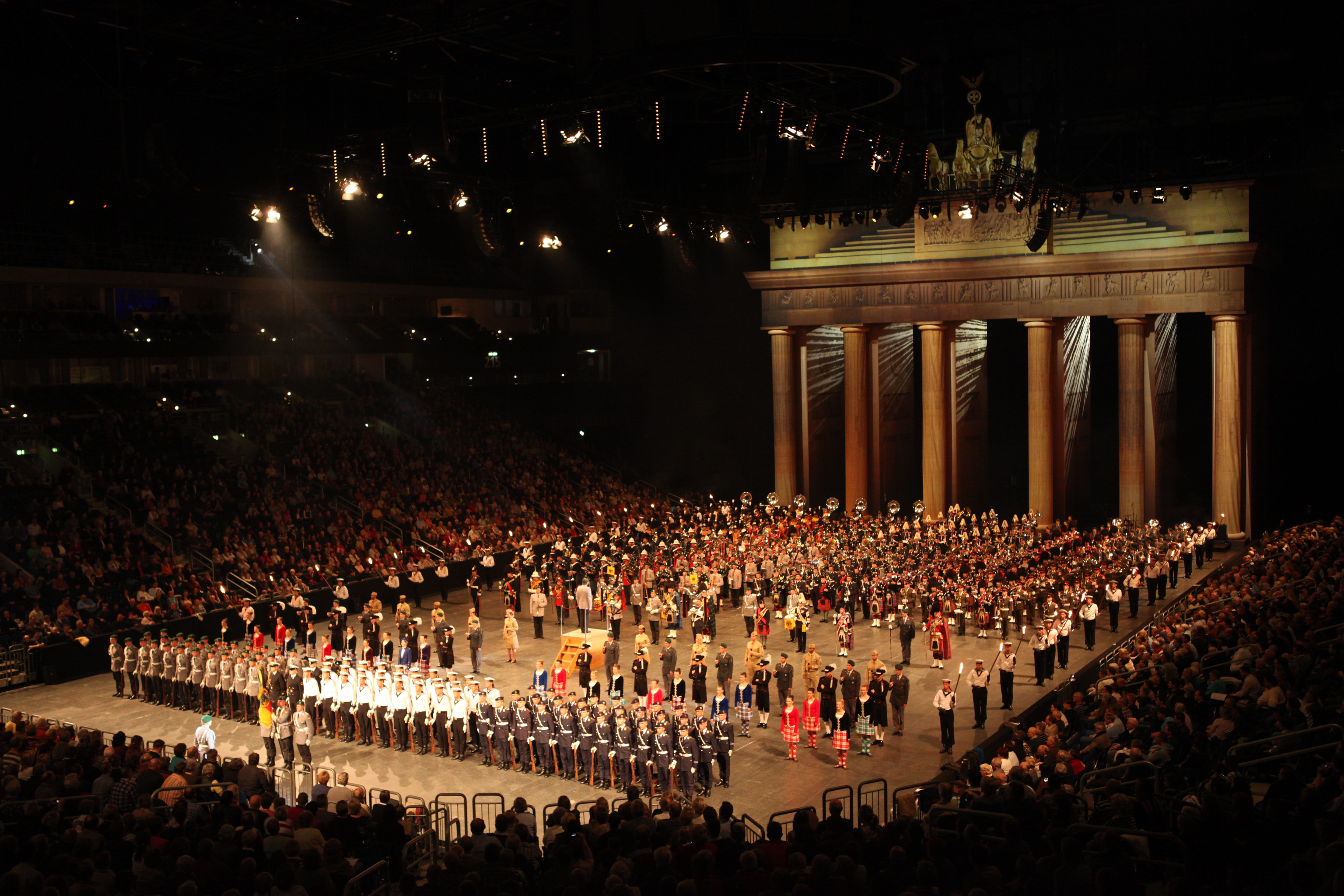|
Bandmaster
A bandmaster is the leader and conductor of a band, usually a concert band, military band, brass band or a marching band. British Armed Forces In the British Army, bandmasters of the Royal Corps of Army Music now hold the rank of staff sergeant, warrant officer class 2 or warrant officer class 1. A commissioned officer who leads a band is known as the director of music. Directors of music are all former bandmasters who have been commissioned. All bandmasters initially joined the Army as musicians and were selected for bandmaster training from non-commissioned rank (usually having reached the rank of at least corporal). However, unlike most NCOs, bandmasters are promoted directly to staff sergeant on completion of their bandmaster training and have not necessarily worked their way through all the intervening ranks. British Army line infantry and cavalry regimental bands were led by bandmasters until the reorganisation of bands and the creation of the Corps of Army Music ... [...More Info...] [...Related Items...] OR: [Wikipedia] [Google] [Baidu] |
Royal Marines Band Service
The Royal Marines Band Service is the musical wing of the Royal Navy and an independent element of the Royal Marines. It currently consists of five bands plus a training wing – the Royal Marines School of Music at HMS ''Nelson'' – and its headquarters is at , Whale Island, Portsmouth. History The development of music in the Royal Marines is inextricably linked with the evolution of British military bands. Lively airs and the beat of the drum enabled columns of marching men to keep a regular step. The drum was the normal method of giving signals on the battlefield or in camp. As long ago as the days of Drake and Hawkins the drummer's rhythm would advertise the changing watches or beat the men to quarters. Royal Marine Drummers were first mentioned in the 1664 Convening Order, at the formation of Corps and so pride themselves as being the oldest Branch in the Corps. Without doubt, groups of musicians existed in the Service before 1767, when Royal Marines Divisional Bands ... [...More Info...] [...Related Items...] OR: [Wikipedia] [Google] [Baidu] |
Warrant Officer (United Kingdom)
A warrant officer (WO) in the British Armed Forces is a member of the highest group of non-commissioned ranks, holding the King's (or Queen's) warrant, which is signed by the Secretary of State for Defence. Warrant officers are not saluted, because they do not hold the King's Commission, but they are addressed as "Sir" or "Ma'am" by subordinates. Commissioned officers may address warrant officers either by their appointment (e.g. QMSI, RSM or sergeant major) or as "Mister", "Mrs" or "Ms", and then their last name, e.g. "Mr Smith". Although often referred to along with non-commissioned officers (NCOs), they are not NCOs, but members of a separate group (traditional official terminology for the personnel of a unit is "the officers, warrant officers, non-commissioned officers and men"), although all have been promoted from NCO rank. In November 2018, the most senior warrant officer and most senior other ranks position was created, titled Senior Enlisted Advisor to the Chiefs of Staf ... [...More Info...] [...Related Items...] OR: [Wikipedia] [Google] [Baidu] |
Concert Band
A concert band, also called a wind band, wind ensemble, wind symphony, wind orchestra, symphonic band, the symphonic winds, or symphonic wind ensemble, is a performing ensemble consisting of members of the woodwind, brass, and percussion families of instruments, and occasionally including the harp, double bass, or bass guitar. On rare occasions, additional, non-traditional instruments may be added to such ensembles such as piano, synthesizer, or electric guitar. Concert band music generally includes original wind compositions, concert marches, transcriptions of orchestral arrangements, light music, and popular music. Though the concert band does have similar instrumentation to the marching band, a marching band's main purpose is to perform while marching. In contrast, a concert band strictly performs as a stationary ensemble. Origins The origins of concert band can be traced back to the French Revolution, in which large bands would often gather for patriotic festivals and ... [...More Info...] [...Related Items...] OR: [Wikipedia] [Google] [Baidu] |
Military Band
A military band is a group of personnel that performs musical duties for military functions, usually for the armed forces. A typical military band consists mostly of wind and percussion instruments. The conductor of a band commonly bears the title of Bandmaster or Director of Music. Ottoman military bands are thought to be the oldest variety of military marching bands in the world, dating from the 13th century. The military band is capable of playing ceremonial and marching music, including the national anthems and patriotic songs of not only their own nation but others as well, both while stationary and as a marching band. Military bands also play a part in military funeral ceremonies. There are two types of historical traditions in military bands. The first is military field music. This type of music includes bugles (or other natural instruments such as natural trumpets or natural horns), bagpipes, or fifes and almost always drums. This type of music was used to control troo ... [...More Info...] [...Related Items...] OR: [Wikipedia] [Google] [Baidu] |
Royal Corps Of Army Music
The Royal Corps of Army Music (RCAM, widely known by its former acronym CAMUS) is a Corps of the British Army dedicated to the provision and promotion of military music. History The formation of the Corps of Army Music was triggered by a defence review known as ''Options for Change'' in 1991 and followed a 1993 announcement by the Chief of the General Staff that the number of regular army bands was to be reduced from 69 to 30. The period saw the number of personnel fall from 2,000 to 1,100, with Lieutenant Colonel Roger Tomlinson of the Royal Military School of Music describing it as "a gloomy time for those of us in the military music business". The Queen signed a warrant on 13 August 1994 to allow the formation of the Corps of Army Music. All regular army officers who were Directors of Music in the various corps and regiments and all regular army musicians would transfer to the Corps of Army Music - now the newest and most junior corps in the army - on 1 September 1994. The h ... [...More Info...] [...Related Items...] OR: [Wikipedia] [Google] [Baidu] |
Vladimir Putin Arrived In Ankara 01
Vladimir may refer to: Names * Vladimir (name) for the Bulgarian, Croatian, Czech, Macedonian, Romanian, Russian, Serbian, Slovak and Slovenian spellings of a Slavic name * Uladzimir for the Belarusian version of the name * Volodymyr for the Ukrainian version of the name * Włodzimierz (given name) for the Polish version of the name * Valdemar for the Germanic version of the name * Wladimir for an alternative spelling of the name Places * Vladimir, Russia, a city in Russia * Vladimir Oblast, a federal subject of Russia * Vladimir-Suzdal, a medieval principality * Vladimir, Ulcinj, a village in Ulcinj Municipality, Montenegro * Vladimir, Gorj, a commune in Gorj County, Romania * Vladimir, a village in Goiești Commune, Dolj County, Romania * Vladimir (river), a tributary of the Gilort in Gorj County, Romania * Volodymyr (city), a city in Ukraine Religious leaders * Metropolitan Vladimir (other), multiple * Jovan Vladimir (d. 1016), ruler of Doclea and a saint of the ... [...More Info...] [...Related Items...] OR: [Wikipedia] [Google] [Baidu] |
Lyre
The lyre () is a stringed musical instrument that is classified by Hornbostel–Sachs as a member of the lute-family of instruments. In organology, a lyre is considered a yoke lute, since it is a lute in which the strings are attached to a yoke that lies in the same plane as the sound table, and consists of two arms and a crossbar. The lyre has its origins in ancient history. Lyres were used in several ancient cultures surrounding the Mediterranean Sea. The earliest known examples of the lyre have been recovered at archeological sites that date to c. 2700 BCE in Mesopotamia. The oldest lyres from the Fertile Crescent are known as the eastern lyres and are distinguished from other ancient lyres by their flat base. They have been found at archaeological sites in Egypt, Syria, Anatolia, and the Levant. The round lyre or the Western lyre also originated in Syria and Anatolia, but was not as widely used and eventually died out in the east c. 1750 BCE. The round lyre, called so fo ... [...More Info...] [...Related Items...] OR: [Wikipedia] [Google] [Baidu] |
Wreath
A wreath () is an assortment of flowers, leaves, fruits, twigs, or various materials that is constructed to form a circle . In English-speaking countries, wreaths are used typically as household ornaments, most commonly as an Advent and Christmas decoration. They are also used in ceremonial events in many cultures around the globe. They can be worn as a chaplet around the head, or as a garland around the neck. Etymology The word ''wreath'' comes from Middle English ''wrethe'' and from Old English ''writha'' 'band'. History Ancient Etruscan wreaths Wreaths were a design used in ancient times in southern Europe. The most well-known are pieces of Etruscan civilization jewelry, made of gold or other precious metals. Symbols from Greek myths often appear in the designs, embossed in precious metal at the ends of the wreath. Ancient Roman writers referred to Etruscan ''corona sutilis'', which were wreaths with their leaves sewn onto a background. These wreaths resemble a ... [...More Info...] [...Related Items...] OR: [Wikipedia] [Google] [Baidu] |
Band Sergeant Major
Band sergeant major (BSM)Note that in the British Army, the plural is "band sergeant majors" and not "band sergeants major". The earliest usage of "sergeant majors" in ''The Times'' is in 1822. The last of the (very occasional) usages of "sergeants major", except when referring to American NCOs, is in 1938. is the appointment held by the senior playing musician in a British Army band, who holds the rank of warrant officer class 2 (except for the senior band sergeant major of the Guards Division, who is a warrant officer class 1). The BSM also functions as the band's second senior non-commissioned officer (NCO) after the bandmaster and has various administrative duties. Formerly, in smaller regimental bands commanded by a bandmaster, the BSM was the senior NCO. Prospective BSMs attend a special three-week course at the Royal Military School of Music, one of which is run every year. The equivalent appointment in the Household Cavalry is band corporal major. The band sergeant ... [...More Info...] [...Related Items...] OR: [Wikipedia] [Google] [Baidu] |
Quartermaster Sergeant
Quartermaster sergeant (QMS) is a class of rank or appointment in some armed forces, especially those of the United Kingdom and the Commonwealth, and formerly also in the United States. Ireland Quartermaster sergeant () appointments in the Irish Defence Forces include: * Battalion quartermaster sergeant * Battery quartermaster sergeant *Company quartermaster sergeant * Flight quartermaster sergeant *Regimental quartermaster sergeant * Squadron quartermaster sergeant United Kingdom A quartermaster sergeant in the British Army and Royal Marines is traditionally a non-commissioned officer or warrant officer who is responsible for supplies or stores. However, this definition is extended to almost any warrant officer class 2 who does not hold a sergeant major appointment, as well as a number of staff sergeant and colour sergeant appointments. In the British Army, quartermaster sergeants are frequently addressed and referred to as "Q". However, infantry company quartermaster serg ... [...More Info...] [...Related Items...] OR: [Wikipedia] [Google] [Baidu] |
Household Cavalry
The Household Cavalry (HCav) is made up of the two most senior regiments of the British Army, the Life Guards and the Blues and Royals (Royal Horse Guards and 1st Dragoons). These regiments are divided between the Household Cavalry Regiment stationed at Kiwi Barracks in Wiltshire and the ceremonial mounted unit, the Household Cavalry Mounted Regiment, garrisoned at Hyde Park Barracks (Knightsbridge Barracks) in London. The Household Cavalry is part of the Household Division and is the King's official bodyguard. Although the Household Cavalry Regiment is armoured, it is not part of the Royal Armoured Corps. Life Guards and Blues and Royals The British Household Cavalry is classed as a corps in its own right, and consists of two regiments: the Life Guards and the Blues and Royals (Royal Horse Guards and 1st Dragoons). They are the senior regular regiments in the British Army, with traditions dating from 1660, and act as the King's personal bodyguard. They are guards regime ... [...More Info...] [...Related Items...] OR: [Wikipedia] [Google] [Baidu] |







